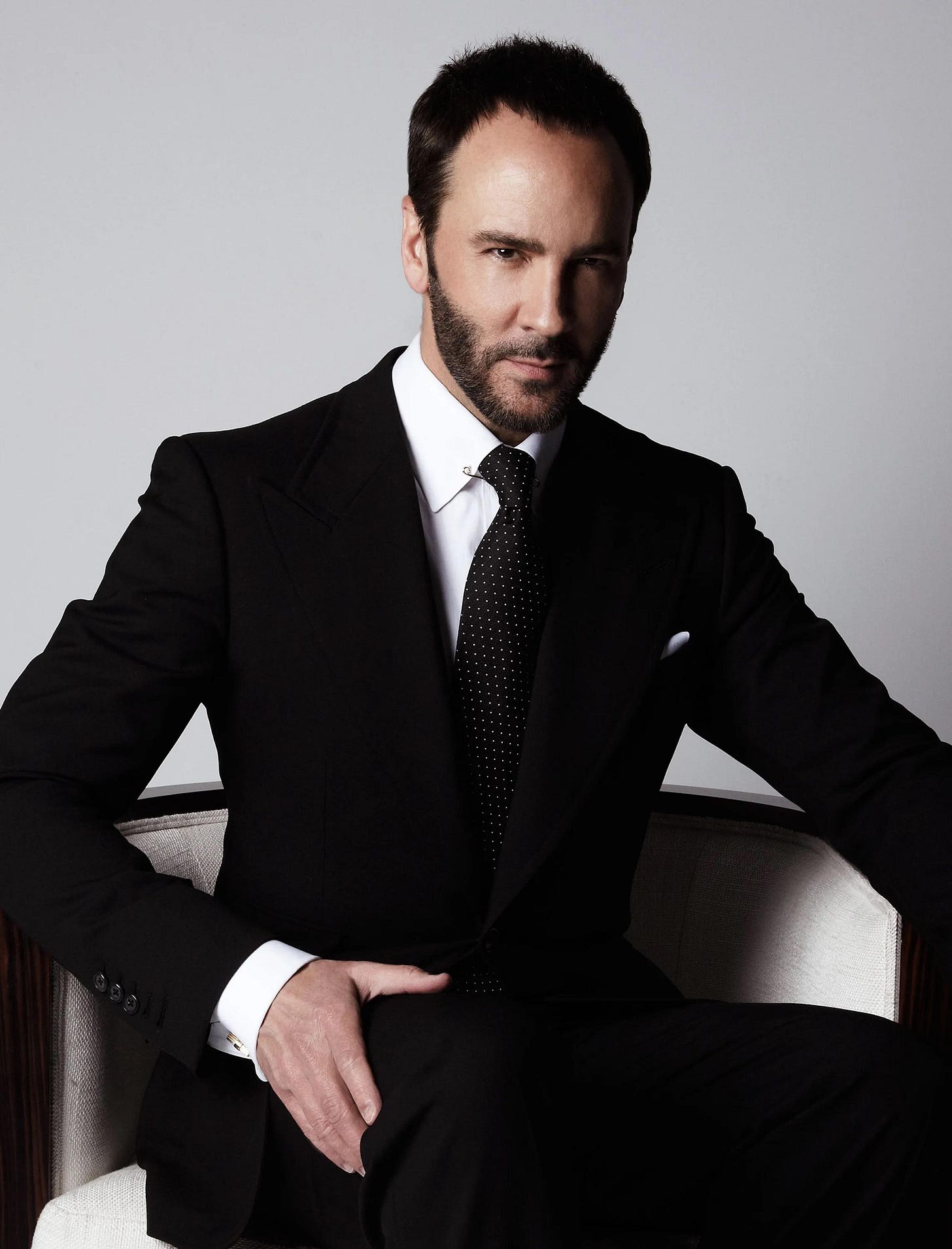The Making of a Heritage Brand
Tom Ford is one of the rare modern designers who has successfully built a heritage-status luxury brand in record time. While many luxury houses rely on centuries of history, Ford created a brand that commands the same level of prestige as legacy fashion houses like Chanel, Gucci, and Saint Laurent. How did he do it? For those seeking to build their own heritage brand, Tom Ford’s approach offers a masterclass in exclusivity, storytelling, and brand longevity.
1. Leveraging Personal Legacy & Credibility
Before launching his namesake brand, Tom Ford spent a decade redefining Gucci and Yves Saint Laurent, elevating them from struggling brands to luxury powerhouses. His work established him as a visionary, giving instant credibility to his own label.
📌 Key Takeaway: If you want to create a heritage brand, your personal brand and credibility must be established first. Whether through collaborations, working with established brands, or honing your craft in the public eye, prestige is built before the launch.
2. Creating a Distinctive Brand Identity
Tom Ford positioned his brand as hyper-masculine, seductive, and unapologetically bold, differentiating it from other luxury brands. Every campaign, product, and store exudes his signature aesthetic: sensual, sophisticated, and cinematic.
📌 Key Takeaway: Heritage brands have a clear and consistent identity. To reach legacy status, your brand must own a distinct aesthetic and philosophy that is instantly recognizable and never diluted.
3. Mastering the Art of Exclusivity
From day one, Tom Ford embraced strategic scarcity and high price points. His brand launched with luxury menswear, beauty, and eyewear, all positioned at the top tier of pricing. Ford never aimed to be mass-market; he focused on the elite, ensuring his brand remained aspirational and desirable.
📌 Key Takeaway: Luxury heritage brands are built on exclusivity, not accessibility. If you want to create a legacy brand, avoid mass production—focus on rarity, quality, and a select clientele.
4. Designing an Unparalleled Customer Experience
Luxury is not just about products—it’s about experience. Tom Ford boutiques are designed like private residences, offering VIP clients a personalized shopping journey. Every interaction, from customer service to packaging, reflects impeccable attention to detail.
📌 Key Takeaway: Heritage brands create immersive, high-touch experiences. If you want longevity, focus on crafting a world customers want to belong to, not just a product they want to buy.
5. Expanding Strategically While Maintaining Prestige
Tom Ford expanded into beauty, fragrance, and eyewear early on—categories that offer accessibility while maintaining exclusivity. Instead of oversaturating the market, he kept the brand’s core high-end and selective, ensuring aspirational customers could access parts of the brand without devaluing it.
📌 Key Takeaway: Smart expansion is key to longevity. A heritage brand must grow without diluting its exclusivity—find ways to expand while maintaining a sense of prestige and scarcity.
6. Mastering Storytelling & Timeless Branding
Tom Ford’s brand storytelling is seductive, cinematic, and deeply emotional. He understands that luxury is about aspiration, and every campaign reflects power, confidence, and allure. His aesthetic hasn’t changed—it remains timeless, ensuring long-term brand relevance.
📌 Key Takeaway: Heritage brands don’t follow trends—they create a timeless world customers want to live in. Define a clear, compelling narrative and stay committed to it over time.
7. Global Expansion & Networking in the Fashion Industry
Tom Ford’s ability to scale globally was not accidental—it was built on strategic networking, industry relationships, and high-profile partnerships. He leveraged his deep ties with Hollywood, elite designers, and luxury fashion executives to position his brand at the top from day one. His relationships with celebrities, stylists, and fashion editors ensured that Tom Ford pieces became coveted statements of luxury.
He also secured exclusive retail partnerships with high-end department stores like Bergdorf Goodman, Harrods, and Neiman Marcus, ensuring that his brand maintained a sense of exclusivity and prestige while expanding internationally.
📌 Key Takeaway: If you want to build a heritage brand with global reach, networking is essential. Form relationships with key players in the luxury fashion industry, align with influential personalities, and secure high-status retail placements to establish a strong, exclusive presence worldwide.
Final Thoughts: How You Can Apply This to Your Brand
Building a heritage luxury brand isn’t about time—it’s about perception, exclusivity, and storytelling. Tom Ford achieved in decades what took other brands centuries. If you want to create a legacy brand, focus on:
Building your personal credibility first
Owning a distinctive, uncompromising brand identity
Creating exclusivity through scarcity and pricing
Delivering an unmatched luxury experience
Expanding strategically without diluting prestige
Mastering storytelling and timeless branding
Network strategically for global expansion
The brands that become legendary don’t just sell products—they sell a world, an emotion, and a legacy.



